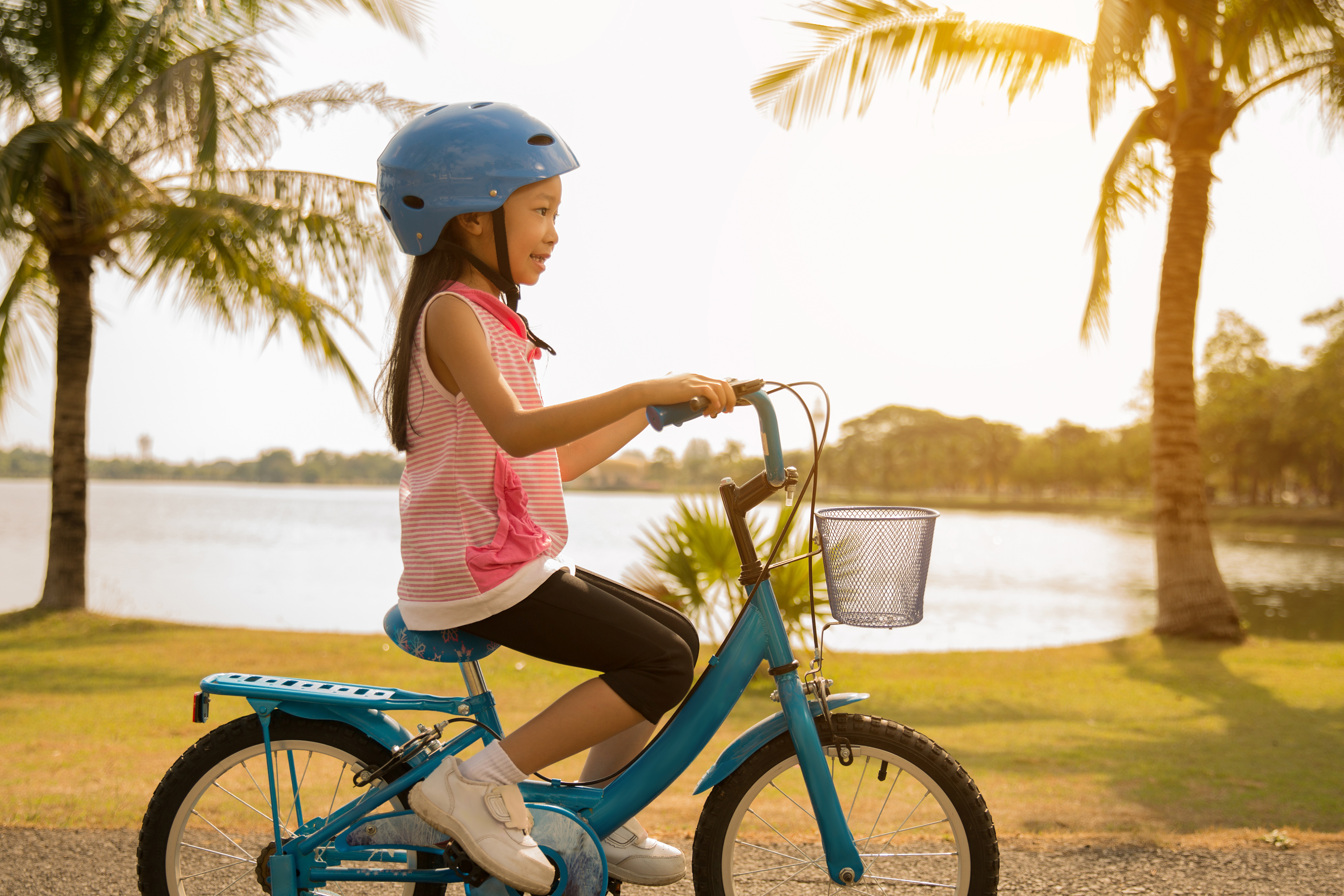Letting your child ride a bike alone for the first time can feel pretty harrowing. You don’t want them to get hurt, but you also want them to be independent. Knowing the approximate age range when kids are old enough to ride a bike alone will help you make a decision you can be comfortable with.
Children should be between 4 and 9 years old to ride a bike without training wheels alone, but it depends on where they’re riding. Most kids ten and older can ride a bike alone, as long as they understand traffic rules and general bike safety measures.
Keep reading to learn the best age for kids to ride a bike without training wheels and how to teach them independent bike riding skills. I’ll also review when they’re old enough to ride short distances alone.

When to Let Kids Ride a Bike Alone
Before letting your kid ride a bike alone, you should make sure your kid can ride a bike without training wheels—more on that later.
When you and your child feel ready, the best plan is to start with short trips and increase the distance as you both become more comfortable and at ease with riding the bike without you there.
The consensus is that riding without a parent can happen around age ten, depending on your child’s responsibility and maturity level. Begin with a solo (or with a friend) bike trip around the block. Remind them of the traffic rules and to stay out of the street.
Once they’ve mastered this short trip, add a longer one that might—such as to the park or a friend’s house. Many kids age ten and above have a cell phone, so have them call you when they arrive and again when they leave to come home.
Over time, your trust in your child should grow and give you the confidence that they’re capable and responsible with a bike. Then you can move on to letting them make longer trips, such as to school.
When to Let Kids Ride a Bike Without Training Wheels
While there’s a range for teaching your kids to ride a bike with no training wheels, many psychologists and pediatricians say the actual age is dependent on several factors. All agree that the final decision is up to parents—they’re the ones who know their kids best and can better make that judgment call.
Riding a bike without training wheels is a sign of developmental progress and a step toward independence. Here are some characteristics to consider when gauging whether your child is ready to try riding with no training wheels.
- You observe they have the right gross motor skills. Bike riding without the protection of training wheels requires coordination, balance, and strength. Leg and core stability are critical, too.
- They’re doing other things with confidence and independence. Riding a bike without the wheels is a task they have to do alone, so having confidence in other areas will help them transfer that attitude to riding without training wheels.
- Your child asks to ride without the training wheels. Waiting until your child expresses interest is an excellent practice to follow.
Teaching Your Kids To Ride a Bike Without Training Wheels
When your child is ready to ride without training wheels, knowing each step will help you as you encourage your child’s success. Following the steps will guide you as you branch out into this often anxiety-filled teaching opportunity.
- Ensure the bike is the proper size for your child. Some parents like to buy a bike the child can grow into, but one of the most important details in helping your kid learn to ride is getting them an appropriately-sized bike.
- Don the helmet. Wearing a helmet protects their delicate noggins and prevents serious injury. Many kids feel better wearing elbow and knee pads, so get those if they prefer wearing pads.
- Locate a space with plenty of room for your child to practice riding. A school or church parking lot and a park area offer plenty of pavements for learning.
- Lower the bike seat to a comfortable height and remove the training wheels. Lowering will allow your child to sit on the bike while reaching the ground with their feet on both sides.
- Demonstrate how to stop the bike as the first lesson. Your child needs to understand how to use the brakes to stop the bike, as this will increase confidence.
- Show your child how to balance once the training wheels are off. You can demonstrate how to drop your feet to the ground when you feel off balance.
- Set a time limit for practicing. Start with a half-hour and continue if your child is receptive. If not, start another day and try to go longer.
- Be encouraging to your child and enthusiastic about their small successes. If you’re feeling frustrated, stop for the day and try another day.
If you’re not sure about what bike size you should get for your child, you can follow these measurements:
| Child height | Wheel diameter |
| 28” to 38” (71 cm to 97 cm) | 12” (30 cm) |
| 38” to 48” (97 cm to 122 cm) | 16” (41 cm) |
| 42” to 52” (107 cm to 132 cm) | 18” (46 cm) |
| 48” to 60” (122 cm to 152 cm) | 20” (51 cm) |
Remain patient and encouraging throughout the learning process. Most children learn to ride without training wheels in three to four weeks. Suddenly, riding seems to click, and they’re off to the races.
Conclusion
While letting your kids ride a bike without training wheels can be a stressful prospect, remember this is a developmental milestone every child needs to experience. Staying observant of their coordination skills will help you know when the time is right.
Riding a bike solo for longer distances depends on where you live and how safe you feel for your child to ride alone. You should use your judgment as a parent to determine if it’s suitable for your child.
Sources
- Pediatric and Adolescent Associates, P.S.C.: Take off the training wheels
- KTL Therapy: Ditching the Training Wheels: 10 Steps to Teach Your Child to Ride a Bike Independently
- The Guardian: When can kids cycle on their own?
- Mommy Poppins: 8 Tips for Teaching Your Child to Ride a Bike Without Training Wheels
- VanMeveren Law Group: Exploring the age when kids can bike alone
